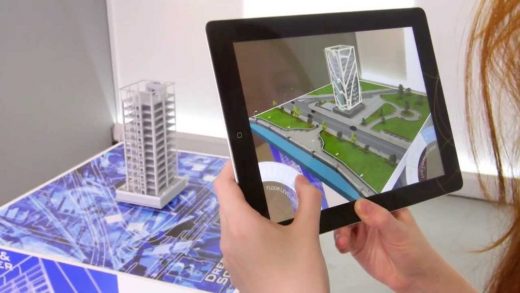How will augmented reality impact the real estate market?
How will augmented reality impact the real estate market?

When you think of real estate and technology, the last thing that may come to mind is an augmented reality (AR) phone app that mimics the gameplay of Pokemon Go and allows you to find apartments in your area that have been haunted by ghosts.
Sounds unrealistic? It’s just a prime example of how the real estate industry is taking advantage of augmented reality technology.
Augmented reality: more than Pokemon Go
Thanks to Pokemon Go, 2016 was the year that the world paid attention to augmented reality. Beyond catching Pokemons, what is augmented reality?
Armand Valdez, a video producer at Mashable, provided a definition of augmented reality and how it is currently used, saying:
“Unlike the full immersion of virtual reality, augmented reality aims to make the world you already see, so much cooler… Augmented reality is when digital information is overlaid onto the actual physical world. Your camera detects a target image and can figure out how close, how far, and at what angle the target image is from the camera using sensors. It then projects digital information onto that target image and voila — augmented reality… Some of the earliest uses of augmented reality were the head-up display on fighter jets, allowing pilots to see important information projected in front of them on their windshields. This technology eventually made its way to automobiles, and even your eyeglasses with Google Glass.”
How AR and real estate work together now
Whether it’s an app on the phone or on an iPad, Augmented Reality provides real estate professionals with the ability to showcase properties, buildings and apartments from a 3-D perspective, all of this would have been done on flat print materials in the past.
With a touch of a button, clients can visualize changes to a property by modifying the color of a wall or by adding a piece of furniture from an Augmented Reality app perspective.
One innovative company named Spacious, based out of Hong Kong, took advantage of a local superstition in which locals do not like to occupy properties in which murders or unfortunate deaths have taken place. The result? These properties which are believed to be haunted, are listed for significantly less.
In the wake of Pokemon Go, the Spacious team added an A/R feature to their app which allows apartment hunters to find these haunted apartments while catching ghosts.

Asif Ghafoor, the founder, and CEO of Spacious spoke on the functionality of the app saying;
“We’re trying to make the process of finding property, for buying or renting easier, this is an important factor that people look at in this part of the world, one that influences the price of that property… When you first open the app, what you see is a map with all the listings, all these little ghost icons are showing the things that happened. In the J Residence, there’s a very famous incident that took place there, and when that property came back on the market, it ended up renting for fifty percent discount…”
Other client-based apps like LUX AR, which provides potential clients the ability to locate properties using their GPS, while HOMESNAPS‘s app provides information about a property after a photo has been taken.
Experts in the real estate industry expect augmented reality to have a huge impact over the next several years, some predicting as many as 2.5 billion in real estate applications by 2025. Whether it is servicing a potential client looking for a property, a realtor showcasing a location or a construction worker visualizing changes to blueprints, augmented reality will have a lasting and sustained impact on how business is done in the real estate sector.
The post How will augmented reality impact the real estate market? appeared first on ReadWrite.
(57)



